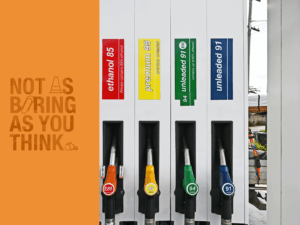Australia is staring down the double barrel of a climate and energy crisis: stick to the green we know or gamble on the green that glows. We’re talking about nuclear power.
The controversial option doesn’t pair well with polite tea parties – but it certainly stirs up strong opinions.
Nuclear’s steamy little secret
Strip away the sci-fi hype and a nuclear power plant is basically a glorified kettle.
The process? Fission (not fusion – yet) generates heat and boils water into steam, spinning a turbine, and ta-da: electricity.
So why all the fuss over a steampunk teapot with delusions of grandeur?
A single uranium fuel pellet equals about 1 tonne of coal in energy, with minimal land use and virtually no emissions – not counting the toxic waste souvenir.
Still steeping
So why hasn’t Australia drunk the nuclear tea?
Our energy grid’s under strain. Coal’s on the way out, renewables are rising, but storage and reliability are barriers. The Sun sets, the wind wanders and batteries have limits.
Nuclear energy could help – but it’s more complicated than reading The Hulk’s tea leaves.
Here’s the tea
Australia’s got a ridiculous radioactive reality: we’re sitting on over 30% of the world’s uranium, but we can’t refine a drop of it into anything usable.
We dig it up like pros, ship it off then buy it back enriched. Make it make sense.
Before we even consider reactors, we need enrichment facilities, waste storage, trained specialists … oh, and to change federal law.
TL;DR (Too Legal; Didn’t Read)
Australia doesn’t just “not use nuclear” – Federal law forbids it.
Caption: The Environment Protection and Biodiversity Conservation Act 1999 and the Australian Radiation Protection and Nuclear Safety Act 1998 = “not on my watch” to federal nuclear facility approvals
Credit: Tarryn Basden – CC BY-SA
So for now, we’re stuck with the humble kettle – not the fancy glowing one.
Boiling it down
Let’s say we magically fast-track everything. What do we get?
Clean power – love that! But radioactive waste lasts for millennia – yikes. Reactors also need massive amounts of water – not great for Australia.
Nuclear delivers consistent, reliable power 24/7, regardless of the Sun’s position or the wind’s movements.
But it’s inflexible, not great at ramping up and down to match demand. This means a potential increase in blackouts and unhappy users.
Nuclear brings high-skilled, long-term, nerdy jobs – love that! But it costs more than Peter Dutton’s property portfolio and takes decades to build.
So tea or coffee?
If we’re throwing billions around, why not supercharge renewables?
Batteries, hydro, microgrids, algae biofuel, solar roads, wind art, fusion dreams …
Sure, we’ve got uranium … but without the legal, financial and infrastructure groundwork, it’s just a shiny rock with a superiority complex.









